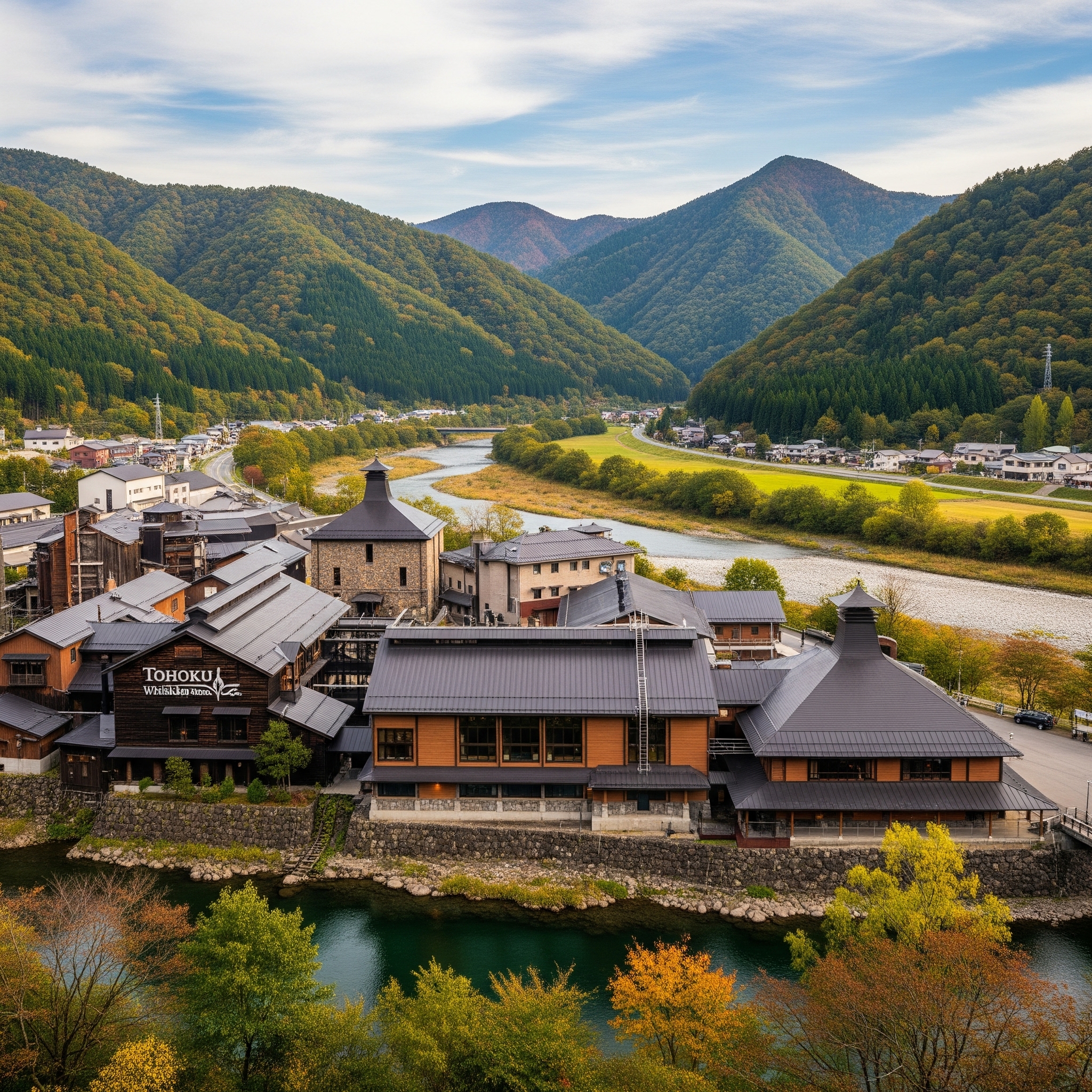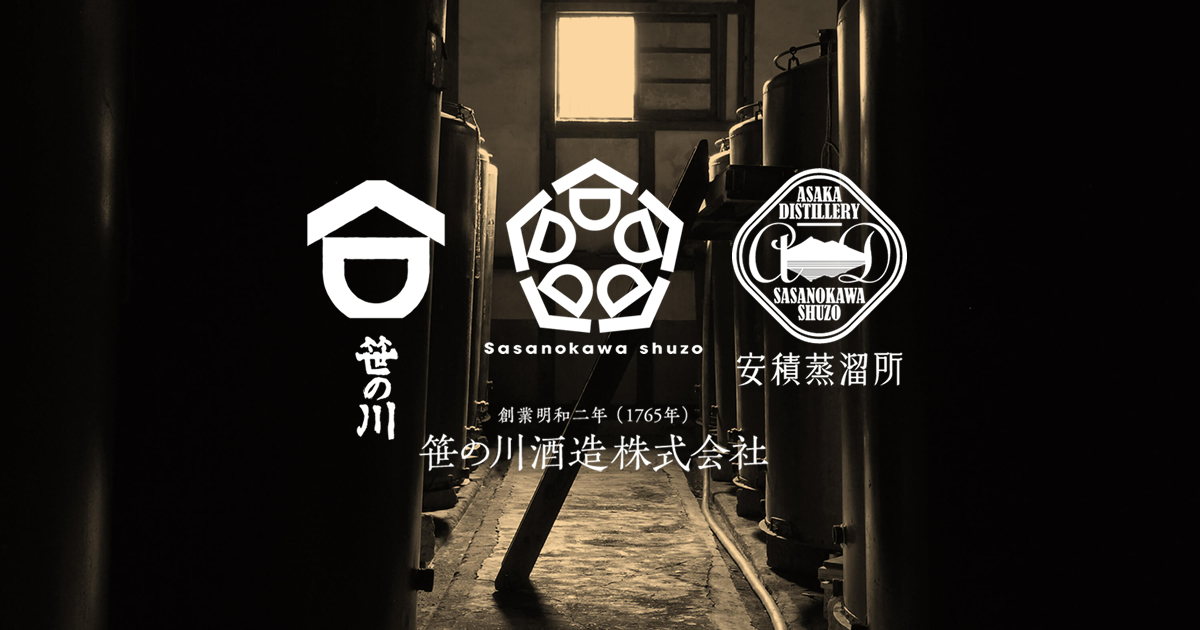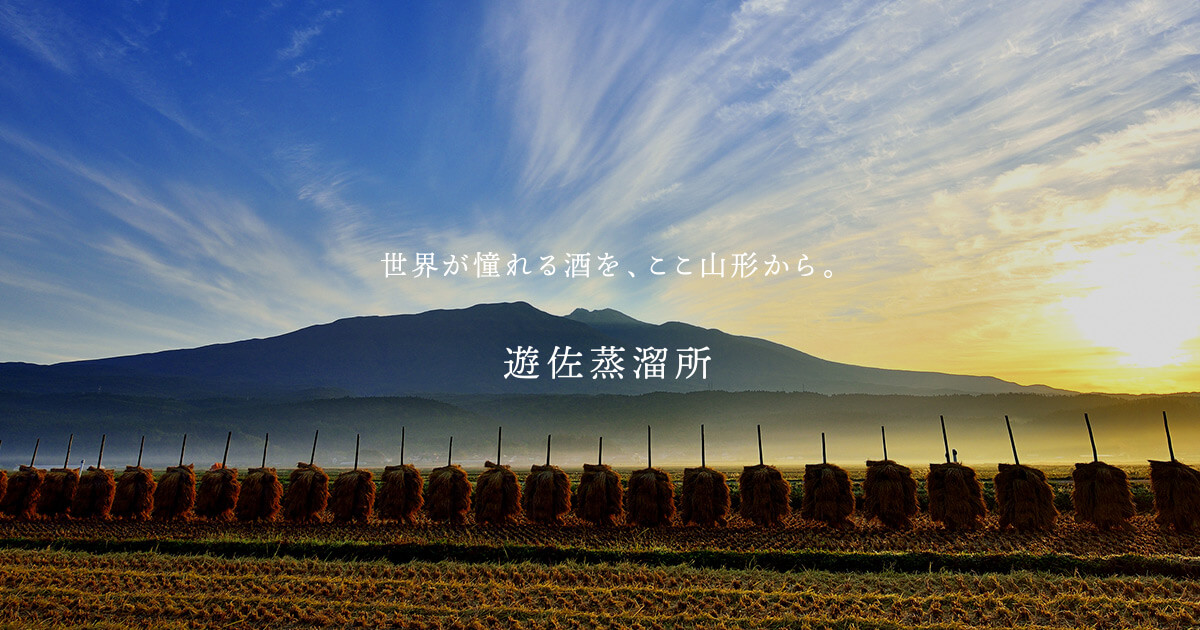Tohoku Whisky Odyssey: An Amber Narrative Woven by the Land

The Tohoku region of Japan, a land blessed with majestic nature, profound history, and unique culture, is now captivating whisky enthusiasts and travelers worldwide. From this very soil, distinctive Japanese whiskies are emerging, each telling a story. This article delves into the rich narrative of Tohoku whisky, exploring its history, the terroir that shapes it, and the individual character of its distilleries.
Unveiling the Allure of Tohoku Whisky
Distinctiveness Born from Rich Nature and Culture
Tohoku’s whiskies possess a unique quality and flavor, nurtured by pristine waters and significant temperature variations. At the Asaka Distillery in Fukushima Prefecture, the Asaka Canal, part of a Japan Heritage site originating from Lake Inawashiro, provides the pure, soft water essential to their whisky’s clarity.
Similarly, Nikka Whisky’s Miyagikyo Distillery in Miyagi Prefecture utilizes the subsoil water of the Shin River, flowing from the Zao mountain range. Its low hardness is considered ideal for whisky making. The Yuza Distillery in Yamagata Prefecture is located in Yuza Town, known as the “village of spring water,” where the exceptional quality and abundance of water were key to its establishment.
This region has long been celebrated for its sake breweries, and the water quality and time-honored brewing techniques cultivated over generations are now being skillfully applied to whisky production. Nanbu Bijin in Iwate Prefecture, a renowned sake brewery, blends its established techniques and the same pristine water used for its sake into its whisky, embodying a fusion of tradition and innovation.
Japanese Whisky Gains Global Recognition, with Tohoku at the Forefront
Japanese whisky has earned international acclaim, and Tohoku’s distilleries are making their mark on this global stage. Fukushima’s Asaka Distillery garnered worldwide attention by winning the World’s Best Blended Malt Whisky award at the World Whiskies Awards 2022. YUZA First edition 2022, the inaugural release from Yamagata’s Yuza Distillery, also received a Gold award at the International Spirits Challenge, testament to its exceptional quality.
Across Japan, a resurgence of small-scale craft distilleries is underway, and Tohoku is playing a vital role in this movement. These distilleries are combining the region’s natural conditions with the traditions of sake brewing to forge a unique “Tohoku terroir.” By merging traditional Japanese craftsmanship with Western whisky-making techniques and maximizing local resources and climate, they are crafting whiskies distinctly their own, a venture that also promises to revitalize the region.
The History and Terroir of Tohoku Whisky
From Dawn to the Modern Era: The Journey of Tohoku Whisky
The history of whisky production in Tohoku dates back to the early days of Japanese whisky. Sasanokawa Shuzo (Asaka Distillery) in Fukushima Prefecture obtained a whisky production license in 1946, becoming Tohoku’s oldest local whisky maker, with over 70 years of history. Its roots lie in a long-established sake brewery founded in the Edo period. Amidst post-war rice shortages and the influx of Western culture, they ventured into whisky making as sake production became challenging.
During the rapid economic growth period, “Cherry Whisky” gained popularity as “Cherry of the North.” However, subsequent liquor tax revisions led to a less favorable time for whisky. With the craft whisky boom of the 2000s, Asaka Distillery regained prominence, restarting full-scale whisky production in 2016 and achieving international recognition.
Nikka Whisky’s Miyagikyo Distillery was established in 1969 by Masataka Taketsuru, often called the “father of Japanese whisky,” to realize his dream of blending malt whiskies from a distillery different from Yoichi, creating a more profound flavor.
More recently, Yuza Distillery in Yamagata Prefecture began operations in 2018 as a new endeavor by shochu maker Kinryu. Nanbu Bijin in Iwate Prefecture, a sake brewery, started whisky production in 2023, the first in the prefecture, charting a new course with its unique philosophy.
The Characteristics of Tohoku’s Climate, Water, and Barrel Wood in Nurturing Whisky
The Art of Maturation Through Temperature Extremes
Tohoku’s climate significantly influences whisky maturation. Koriyama City, Fukushima (home to Asaka Distillery), experiences a wide temperature range, from 35°C in summer to -5°C in winter. This variation affects the “angels’ share,” the amount of whisky that evaporates from the barrels. At Asaka Distillery, this can be 3-5% annually, higher than usual. This high evaporation rate concentrates the flavors and accelerates maturation. The cold winter winds known as “Bandai Oroshi” are also believed to impart a unique character to the whisky.
Pristine Water Shapes the Quality
In whisky making, the water used is crucial in determining the final quality. Asaka Distillery benefits from the Asaka Canal’s water from Lake Inawashiro, Miyagikyo Distillery from the subsoil water of the Shin River flowing from the Zao mountains, Yuza Distillery from the pure water of its “spring water village,” and Nanbu Bijin from the subsoil water of Mt. Oritate-Basenkyo. Each distillery is blessed with exceptional water sources.
The Potential of Domestic Wood Like Mizunara
Tohoku’s unique climate also lends itself to the potential of domestic wood for whisky maturation. The harsh winters and warm summers slowly nurture native broad-leaved trees like Japanese oak (Mizunara), chestnut, and wild cherry, creating beautiful annual rings. Mizunara, in particular, is known for imparting a distinctive, fragrant aroma to whisky.
Nanbu Bijin in Iwate Prefecture is pioneering research and development into using barrels made from “urushi” (Japanese lacquer) trees, for which Ninohe City in Iwate boasts the highest production in Japan. This innovative approach aims to mature whisky with a terroir unique to Ninohe.
A Guide to Tohoku’s Key Whisky Distilleries
Fukushima Prefecture: Sasanokawa Shuzo Asaka Distillery

Tohoku’s Oldest History Meets Innovation
Sasanokawa Shuzo has its roots in a long-established sake brewery founded in 1710. It obtained a whisky production license in 1946 and has been Tohoku’s oldest local whisky maker for many years. In 2003, an experience of storing casks of malt whisky from another company (Ichiro’s Malt) reignited their passion for whisky making, leading to the release of their own “YAMAZAKURA” whisky in 2014. In 2016, they revitalized their whisky production by reopening the Asaka Distillery in a relocated traditional storehouse.
The Blessings of “Asaka Canal” and the Maturation Influenced by “Bandai Oroshi”
Asaka Distillery uses water from the Asaka Canal, sourced from Lake Inawashiro. The significant temperature variations characteristic of the Koriyama basin and the “Bandai Oroshi” winds uniquely influence the whisky’s maturation, resulting in a rich aroma, smooth taste, and long finish.
Key Products, Awards, and Distillery Tours
A recommended product from Asaka Distillery is the “World Blended Whisky Asaka Distillery & 4,” a blend of whiskies from four countries around the world, which won the World’s Best Blended Malt Whisky award at the World Whiskies Awards 2022.
Pre-booked distillery tours are available, followed by tastings and souvenir shopping at the adjacent shop.
https://www.sasanokawa.co.jp/asaka-distillery
Miyagi Prefecture: Nikka Whisky Miyagikyo Distillery

Masataka Taketsuru’s Pursuit of an Ideal Land
Masataka Taketsuru founded the Miyagikyo Distillery in 1969, driven by his vision to blend malt whiskies from a distillery different from Yoichi to create a more nuanced flavor. It is nestled in a lush valley west of Sendai, surrounded by the clear streams of the Hirose and Shin Rivers.
During construction, Taketsuru’s belief that “delicious whisky cannot be made without respecting nature” was paramount. The felling of trees was minimized, and all power lines were buried underground, demonstrating a deep harmony with the natural environment.
Distillation Methods Yielding Elegant and Fruity Spirits
Miyagikyo Distillery’s whiskies are characterized by their floral, fruity, gentle, and soft profile. Unlike Yoichi’s direct coal-fired distillation, Miyagikyo employs indirect heating with steam and uses bulge-shaped pot stills with upward-sloping lyne arms.
Their grain whisky is produced using traditional Coffey stills, a method Taketsuru was passionate about. While less efficient, these old-style stills retain more of the raw material’s characteristics, resulting in a grain whisky with a sweet, creamy richness.
Tours and Tasting Experiences
Miyagikyo Distillery offers free general tours where visitors can learn about the whisky-making process and Nikka’s history. Tastings include apple brandy, Super Nikka, and Single Malt Miyagikyo, with ice, water, and soda water for the tasting all sourced from the Shin River’s subsoil water.
Notably, there are no overhead power lines or utility poles on the distillery grounds, a testament to Taketsuru’s commitment to preserving the natural scenery.
Yamagata Prefecture: Yuza Distillery

Yamagata’s First Challenge Born in the Land of Spring Water
Yuza Distillery, backed by shochu maker Kinryu, began operations in November 2018. With the ambition to “deliver whisky that the world admires,” it was established in Yuza Town at the foot of the majestic Mt. Chokai, a region known for its abundant spring water.
A unique aspect of Yuza Distillery is that its core team consists of four individuals with no prior whisky-making experience. Without relying on experts, these enthusiastic young staff members started from scratch, aiming to create a “Yuza Distillery flavor.”
Embracing Scottish Methods While Leveraging Local Terroir
Yuza Distillery has installed two pot stills from Scotland, mirroring Scottish methods in both equipment and process. The barley used is also imported from Scotland. The wash still has a straight head, while the spirit still is bulge-shaped, both featuring long, slightly downward-sloping lyne arms to maximize contact with copper.
The significant temperature variations in Yuza Town are expected to accelerate the whisky’s maturation.
Product Characteristics and International Recognition
Their first release, the single malt “YUZA First edition 2022,” received a Gold award at the ISC (International Spirits Challenge). They released “YUZA Third edition 2023” in November 2023.
Iwate Prefecture: Nanbu Bijin Distillery

A New Venture for a Sake Brewery
Nanbu Bijin’s foray into whisky making is partly inspired by the UNESCO World Intangible Cultural Heritage designation of Japan’s “traditional sake brewing.” Koji Kuji, the fifth-generation owner, received numerous requests for “whisky made by Nanbu Bijin” while exporting their sake to 62 countries.
Their production of disinfectant alcohol during the COVID-19 pandemic led to the creation of craft gin and vodka, further captivating Mr. Kuji with the allure of distilled spirits, prompting him to embark on the challenge of whisky making.
Crafting Whisky that Expresses the “Worldview of Sake”
Nanbu Bijin’s Japanese whisky respects the worldview and values of sake, focusing on:
- Using “Japanese” malt: Starting with “Tohoku-grown malt” based on the sake philosophy.
- Using the same well water as for sake: The “Oritate-Basenkyo subsoil water” used since their founding in 1902.
- Using sake yeast: A hybrid of “Nanbu Bijin yeast” and whisky yeast.
- Storing and aging in the “kura” (sake brewery): Renovating old storehouses to house aging barrels.
- The challenge of barrels made from “urushi” wood: Pioneering research and development into the world’s first urushi wood barrels.
Nanbu Bijin aims to showcase Ninohe City, Iwate, to the world, with “clean and beautiful” as the flavor theme for both their sake and whisky. Since December 2024, they have offered paid tastings of their maturing whisky, allowing visitors to experience the progression of aging by sampling from the same cask at three-month and six-month intervals. The official release is planned for around 2027.
Akita Prefecture: Akita Distillery (Planned)
Akita Prefecture has a history of whisky production, with Taisei Shuzo and Ryozeki Shuzo having previously engaged in it. Currently, the “Akita Distillery” project is underway, overseen by Kenichi Sato, the owner bartender of Akita’s Bar Le Verre, with a planned annual production of 20,000 liters.
Akita Prefecture has peat layers in the Omono River basin and near Lake Hachirogata, which once yielded peat necessary for whisky production. Additionally, Akita’s average annual temperature is similar to that of Suntory’s Hakushu Distillery and Nikka Whisky’s Miyagikyo Distillery, providing favorable conditions for crafting quality whisky.
The planned distillery will also include a restaurant and accommodation facilities, with expectations of it becoming a tourism hub.
The Future Forged by Tohoku Whisky
Contributing to the Local Economy and Attracting Tourists
Tohoku’s distilleries are attracting visitors from both Japan and abroad with their distinctive whiskies. The concept of “Terroir Tohoku” blends “terroir,” representing the climate, land, and human activity, with “mariage,” the pairing of food and drink. With the concept of “the ultimate mariage is found in the place of origin,” it aims to share “new, moving experiences through the symphony of Tohoku’s people, food, scenery, and culture” with the world.
Whisky production contributes to regional revitalization through sales at local restaurants and roadside stations, as well as through its use as a return gift for hometown tax donations. The “Project for Hope Barley,” which uses barley grown in areas affected by the Great East Japan Earthquake, exemplifies how whisky production supports regional recovery and agricultural sustainability.
Towards the Development of a Sustainable Whisky Industry
While Tohoku’s whisky industry is in a growth phase, challenges such as labor shortages and land availability exist for its sustainable development. Furthermore, environmental conservation activities, such as preserving water source forests, are crucial to protect the pristine water and abundant forest resources.
On the other hand, the increasing global demand for Japanese whisky is a significant tailwind, and proactively disseminating information to overseas markets will be key to future growth.
Conclusion: The Profound Allure of Tohoku Whisky

Tohoku’s whisky is more than just a beverage; it embodies a story of resilience, overcoming the hardships of the post-war era and a period of decline to shine once again amidst the modern craft whisky boom. Each distillery harnesses the terroir – the pure water, significant temperature variations, and local barrel wood – to create uniquely characterful whiskies.
Challenges like Nanbu Bijin, which elevates the traditions and philosophy of sake brewing into whisky making, are opening new frontiers for Japanese whisky. Moreover, the awareness of contributing to the local economy and developing as a sustainable industry paints a bright future for Tohoku whisky.
A journey through Tohoku’s whisky distilleries is not just about tasting the amber liquid; it’s about experiencing the terroir, history, and the passion of the people behind it – a sensory exploration. It is truly an “amber narrative woven by the land,” a condensation of the region’s natural blessings and the spirit of artisans who honor tradition while embracing innovation.
